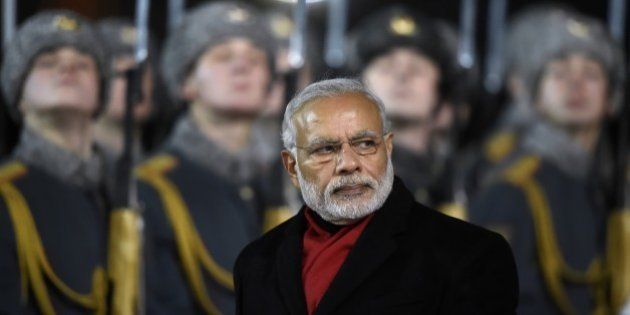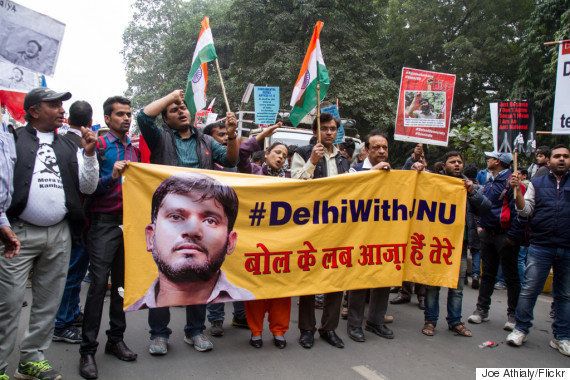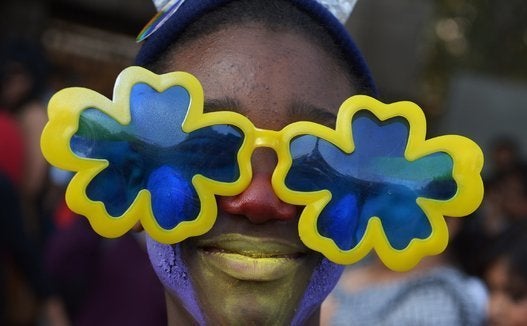
NEW DELHI -- Amid the clamour of unrest sweeping university campuses and the state of Haryana near New Delhi, Prime Minister Narendra Modi has decided on a strategy that risks emboldening political opponents: silence is golden.
Advisers describe a leader who is on top of events, but who prefers not to get sucked into rowdy debate on India's public square.
In recent weeks, thousands of students have protested across the country over the arrest of a student leader for alleged sedition, while anger among the powerful Jat community over caste-based job quotas spilled into deadly clashes in Haryana.

"He (Modi) believes that his popularity comes from being seen as a serious politician who gets on with his work," said a leader of Modi's ruling party, who spoke on condition of anonymity. "He does not believe in giving a running commentary."
An adviser said that Modi, 65, would instead give a sober assessment of recent unrest to parliament, which convened this week for its budget session in a climate of confrontation that is likely to further stall his ambitious economic reform agenda.
Modi's reticence, also evident during floods last year and a high profile attack by militants in early 2016, has undermined the image of a decisive leader who swept to power in May, 2014, defeating a Congress government led by the taciturn Manmohan Singh.
"Modi is a person who we thought was a decider; a CEO-like leader. But if we are now getting signals that he is not necessarily the effective administrator we thought he was."
"The silence raises questions about being on top of your brief," said Milan Vaishnav, an associate at the Carnegie Endowment for International Peace.
"That conversation has begun: Modi is a person who we thought was a decider; a CEO-like leader. But if we are now getting signals that he is not necessarily the effective administrator we thought he was, that is becoming a problem."
A new opinion poll showed Modi's popularity holding up, while Congress has bounced back from its dire election showing of 2014, validating a strategy of blocking reforms and latching on to protests as they flare up.
If a general election were held now, Modi's nationalist alliance would win, but with a sharply reduced majority. Congress would double its seat share, according to the poll for India Today magazine published last week.
LEADERSHIP VACUUM?
Modi's silence on unforeseen events contrasts with his reputation as an effective communicator, through rousing speeches and social media, when broadcasting his vision of inclusive growth and development for India's 1.3 billion people.
When he does retreat from public view, aides have been known to step in, not always with happy consequences.
After the arrest for sedition of Kanhaiya Kumar, a student leader in New Delhi, Home Minister Rajnath Singh circulated a fake tweet that falsely suggested a campus protest had the support of a notorious Pakistani militant.
Delhi's police chief showed no remorse when officers failed to prevent lawyers manhandling Kumar in court, while education minister Smriti Irani backed a decision to fly Indian flags, from 207-foot (63-metre) flagpoles, on campuses across the country as a reminder to "anti-national" elements.

Meanwhile, the unrest has revived Congress' leader-in-waiting, Rahul Gandhi, who has joined students on the barricades and shows no signs of ending opposition to a key tax reform that has been blocked in parliament.
In Haryana, its chief minister fell foul of the powerful Jat caste, which turned to violence when he failed to meet their demands for affirmative action on jobs and education.
More than a week of protests killed 19 people, injured 170, destroyed businesses, paralysed transport and cut water supplies to metropolitan Delhi.
A spokesman for Chief Minister Manohar Lal Khattar, who is from Modi's Bharatiya Janata Party, said he was determined to address the legitimate demands of the Jat community, while those responsible for the violence would be punished.
"He will carry on. He enjoys the full faith and confidence of party leaders," spokesman Amit Arya said.
At the weekend, rather than intervening, Modi blamed unnamed outside conspirators for "hatching conspiracies every day to finish and defame me".
Leaders have echoed his rhetoric, with Parliamentary Affairs Minister Venkaiah Naidu on Tuesday criticising "false propaganda, anti-government propaganda".
"When Modi starts seeing a conspiracy in everything I think he is in serious trouble," said Nilanjan Mukhopadhyay, author of "The Man, The Times", a biography of Modi.
"It is an admission that he is not able to manage the thrust of his government. So he has to apportion the blame to someone."



Contact HuffPost India
Also On HuffPost:

